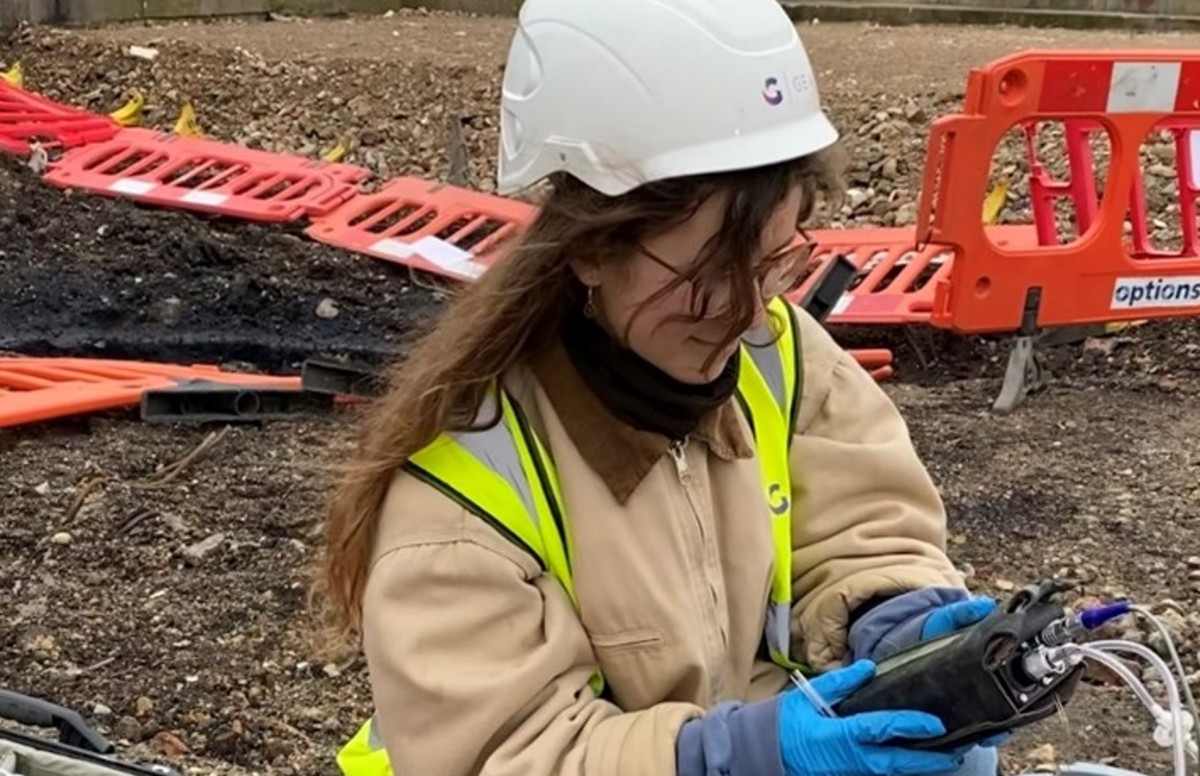What Does Geotheta Mean?

A geotechnical designer is a specialized civil designer who concentrates on the behavior of dirt, rock, and various other materials discovered beneath the Earth's surface area. They apply scientific principles and design techniques to examine the homes and actions of these materials to support the secure and effective style, construction, and maintenance of facilities jobs.
They conduct website examinations, collect samples, execute laboratory tests, and examine information to evaluate the suitability of the ground for building tasks - Consulting Engineers. Based on their findings, geotechnical engineers supply referrals for structure design, slope stability, maintaining frameworks, and reduction of geotechnical threats. They collaborate with other experts, such as designers, structural engineers, and building teams, to make sure that geotechnical factors to consider are incorporated into the total task layout and execution
By assessing the behavior and properties of dirt and rock, they can determine potential geotechnical threats such as landslides, soil settlement, or slope instability. Their knowledge helps avoid failures or accidents that could endanger lives and residential or commercial property. Here are some comprehensive responsibilities and responsibilities of a geotechnical designer: Website Investigation: Geotechnical engineers conduct website investigations to gather information on subsurface problems.
They translate the information to recognize the properties and behavior of the soil and rock, including their toughness, permeability, compaction attributes, and groundwater problems. Geotechnical Evaluation and Style: Geotechnical engineers evaluate the information accumulated throughout website examinations to analyze the security and viability of the site for building tasks. They execute geotechnical estimations and modeling to review variables such as birthing ability, negotiation, slope stability, side planet stress, and groundwater flow.
Geotheta for Beginners
Foundation Design: Geotechnical designers play an essential function in designing structures that can safely sustain the desired structure. They assess the dirt conditions and lots demands to determine the ideal foundation kind, such as shallow structures (e.g., footings), deep structures (e.g (https://www.producthunt.com/@geotheta1)., piles), or specialized strategies like dirt enhancement. They think about elements such as settlement limits, bearing capacity, and soil-structure communication to create optimum foundation styles
They review building and construction strategies, screen site tasks, and carry out field inspections to validate that the style recommendations are followed. If unanticipated geotechnical problems arise, they analyze the circumstance and offer recommendations for removal or modifications to the design. Threat Evaluation and Reduction: Geotechnical engineers assess geotechnical threats and dangers related to the job website, such as landslides, liquefaction, or soil erosion.

Collaboration and Interaction: Geotechnical engineers function carefully with other specialists associated with a job, such as architects, architectural engineers, and construction groups. Effective interaction and collaboration are necessary to integrate geotechnical factors to consider into the total job design and building and construction process. Geotechnical designers offer technological competence, answer inquiries, and ensure that geotechnical needs are met.
Getting My Geotheta To Work
Below are some kinds of geotechnical engineers: Structure Designer: Foundation engineers focus on making and analyzing foundations for structures. They examine the dirt problems, load requirements, and site qualities to figure out one of the most appropriate foundation type and design, such as shallow foundations, deep foundations, or specialized techniques like pile foundations.
They evaluate the factors influencing slope stability, such as soil buildings, groundwater problems, and incline geometry, and create approaches to prevent slope failings and minimize threats. Earthquake Designer: Quake designers focus on examining and creating structures to stand up to seismic forces. They evaluate the seismic risk of a site, assess dirt liquefaction possibility, and create seismic style requirements to guarantee the security and resilience of frameworks throughout earthquakes.
They carry out area screening, gather samples, and analyze the collected information to define the soil homes, geologic formations, and groundwater problems at a website. Geotechnical Instrumentation Engineer: Geotechnical instrumentation designers concentrate on monitoring and gauging the habits of soil, rock, and structures. They mount and preserve instrumentation systems that monitor factors such as soil settlement, groundwater degrees, slope movements, and architectural displacements to assess efficiency and provide very early warnings of potential problems.
The 9-Second Trick For Geotheta
They have a tendency to be investigative individuals, which indicates they're intellectual, reflective, and inquisitive. They are curious, methodical, reasonable, logical, and logical. A few of them are likewise social, indicating they're kind, charitable, participating, person, caring, practical, understanding, sensible, and pleasant. Does this sound like you? Take our totally free occupation examination to figure out if geotechnical engineer is among article source your leading job suits.
In the workplace setting, geotechnical designers use specialized software application tools to carry out calculations, create layouts, and examine data. They prepare reports, testimonial job specs, communicate with clients and staff member, and coordinate project activities. The office setup offers a favorable atmosphere for research, evaluation, and partnership with other professionals associated with the job.
The 8-Second Trick For Geotheta
They frequently check out project websites to perform site investigations, analyze geotechnical conditions, and collect information for evaluation. These sees involve taking a trip to various places, occasionally in remote or challenging surfaces. Geotechnical designers may do dirt sampling, conduct tests, and display construction tasks to ensure that the geotechnical elements of the job are being implemented properly.
Geotechnical designers likewise function in specialized geotechnical labs. Geotechnical lab designers function thoroughly in these settings, taking care of screening tools, running tools, and videotaping information.
Comments on “Excitement About Geotheta”